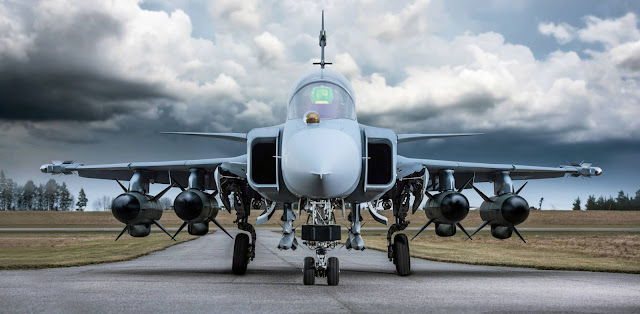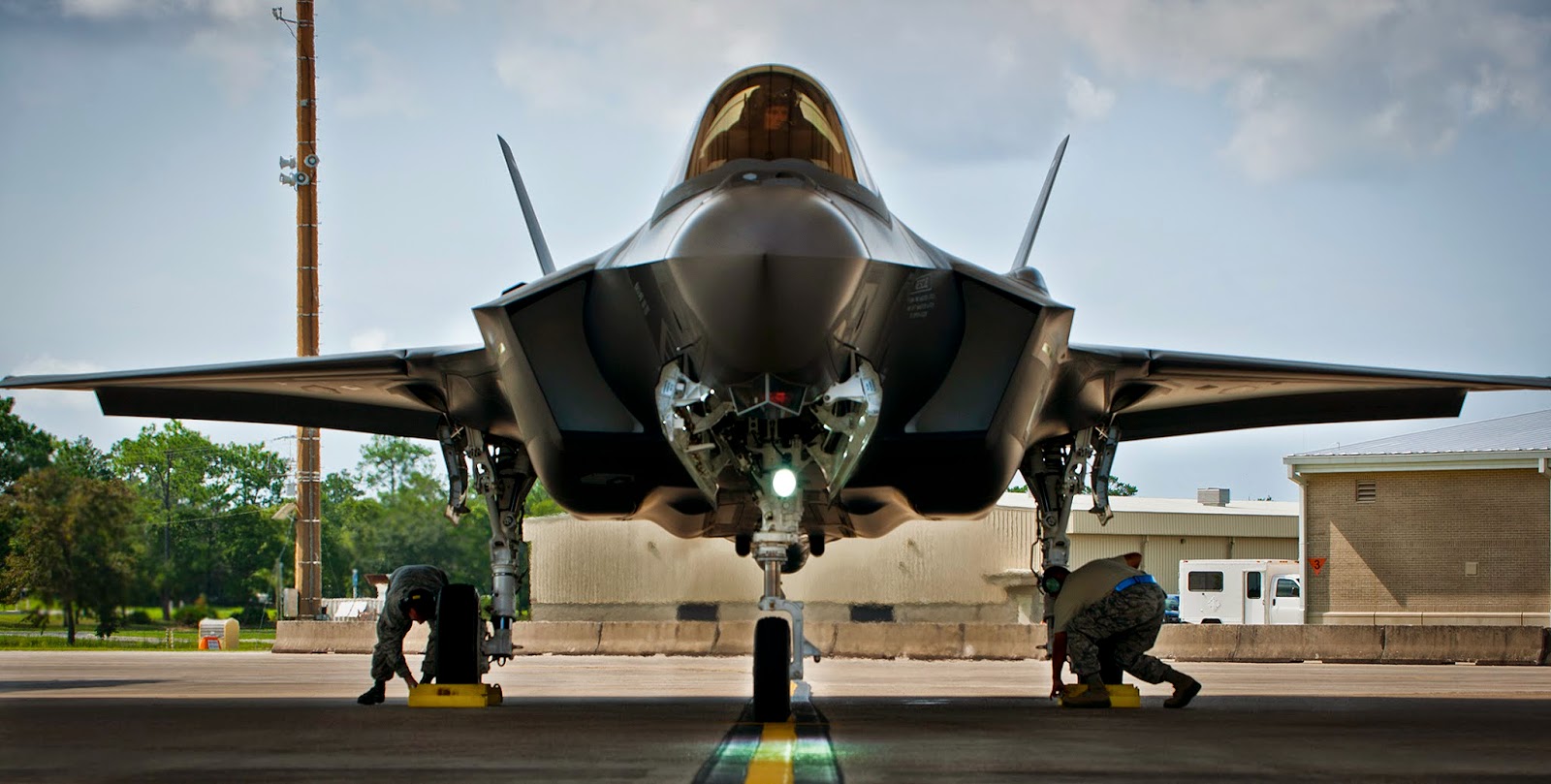French taunter (and tempter).
 |
| Dassault Rafale |
Robins mentioned RAFALE International's (the consortium of French companies responsible for the Rafale) business dealings with Canadian defense and aerospace firms to the tune of $4.3 billion. Robins then went on about Dassault submission to Canada's National Fighter Procurement Secretariat, placing a high emphasis on Canadian economic benefits if it chooses the Rafale over the F-35.
Dassault has promised a guaranteed 100% economic offset on the purchase price, common for most large-scale military purchases. There is no offset guarantee with the F-35 however, merely the opportunity for Canadian companies to bid on JSF contracts; this means we can win big, lose big, or make even... Depending on the whims of the market.
Dassault also has offered something completely different from what Canada would have with the F-35; "the transfer of all intellectual property and technology in the RAFALE to Canada - with no restrictions". This means we get to service, upgrade, and modify the Rafale as we see fit. A Canadian Rafale would be serviced in Canada, by Canadians.
This is different to the F-35, whose source code is completely under wraps by Lockheed Martin and the Pentagon. This means all future upgrades and major updates has to be handled by them. If we need any Canada specific modifications, we need to pay them and hope it gets done without too many delays.
 |
| Rafale vs. F-35. This time... It's personal. |
The Rafale is a damn good fighter. It checks off all the right boxes: Supercruise, maneuverability, IRST, AESA radar, a good payload, and a very admirable range. It also offers the perceived safety advantage of twin engines and it uses the "probe-and-drogue" method of refueling currently in use by the RCAF.
But the Rafale isn't perfect. I've written a about a few of the Rafale's issues before. It use of French sourced engines, missiles, and avionics might not be palatable to an RCAF used to American sourced weaponry. There have been some criticisms toward its cockpit, as well as its lack of helmet mounted cueing system. The good news is, under Dassault's deal, Canada has the freedom to modify the Rafale as it sees fit. That includes modifying it to use the current stockpile of Sidewinder and AMRAAM missiles used by the CF-18. It also opens the possibility of Canadian modifications being marketed to other Rafale users (although this is a pretty small club at the present).
When it comes down to it, I still believe that the Rafale is a long-shot for Canada. The French government simply doesn't have the same political pull in Canada as the Americans (F-35 and F-18E/F) or the British, Germans, Spanish, and Italians (Eurofighter Typhoon). The Rafale hasn't exactly been successful on the export market so far, with only India making a serious offer.
Dassault's offer is hard to ignore, however. At the very least, it serves to illustrate what the competing fighter manufacturers should be offering. Full industrial offsets, open source platforms, and a proven design.
Maybe Canada should announce a full-blown fighter competition before the French taunt us a second time.



Beware of French! We could taunt you... anytime! :-)
ReplyDeleteEven if I don't like it, I completely agree Rafale for Canada is a very long shot. As you write, political bond between France and Canada is rather weak, especially when compared to USA and United Kingdom (probably the most significant country for Canada in the Eurofighter team).
Weapons integration is an issue. Not on the technical side, but on the financial one : Dassault can do the work, but that's not without a cost (especially for air-air missiles). Nevertheless, cost would reduce if Canada were making the choice of Meteor against AMRAAM....
About engines, I should point out that Typhoon is powered by an european-sourced engine as well.
Do you mean something specifically about avionics? Because, problem seems almost the same with all non-american contenders.
The helmet mounted cueing system issue is a shame : tactical advantage is widely recognized, but we can't fund it... but India could resolve that!
Finally, the only way for Rafale to have any chance in Canada would be to propose an original and unrivalled partnership, especially between industrial partners.
Bad news is, originality isn't a french strong point...
By the way, good joke with the "although this is a pretty small club at the present".
And thanks for posting about our little rebel fighter of France ;-)
I have a soft spot for the Rafale, it's a very pretty aircraft!
ReplyDeleteThe Snecma engines are only a concern because Canada has a heavy presence of competitors GE and Pratt&Whitney. The Typhoon's Eurojet EJ200 are basically made by Rolls Royce, which also has a significant presence in Canada. Snecma has partnered with P&W Canada in the past however.
There is some concern about whether the Rafale has been sufficiently tested for cold weather, but I doubt this would be a problem. The F-35 hasn't been cold tested AT ALL yet.
Other issues with the Rafale are mere niggles: The Damocles targeting pod is a lower resolution than competing pods like the Sniper XR and I've read rumbling about some of its cockpit displays not being the greatest. Specifically, the centre MFD is magnified by use of a lens, while the other two MFDs are much smaller and farther away. Not a big deal, I'm sure, just something that the pilot would have to get used to.
I would say the biggest (non-political) issue with the Rafale would be its lack of helmet mounted cueing. While this could be fixed easy enough, as well as most of the other issues, it would cost money and time. A "Canadianized" Rafale, possibly with GE414s and some minor avionic and weapon system changes would be a great aircraft for Canada, but it may not be worth the added effort. Especially with the Typhoon, F-35, Super Hornet, and maybe even the Gripen competing.
Who knows, however? Dassault is desperate for more sales, and the Indian Rafale buy may make it possible for them to offer a more attractive offer to Canada. The other jets have their share of issues as well... You never know.
Yeah, Rafale is a surprisingly (for a war machine) nice-looking aircraft.
ReplyDeleteOk, you were thinking about manufacturing the engines in Canada. Yes in this area, GE and P&W are a step ahead. But it seems not worth the cost to integrate a different engine : different size, different weight, air intakes modification needed, etc... That would cost a lot.
"Canadianized" avionics (helped by the strong presence of Thales in Canada) and weapon system seem a more realistic, and evenly interesting for Canada, solution.
The Damocles story is interesting. Targeting pods is a very small market with only 2 other occidental competitors (USA and Israel). This capability was probably considered too important in the era of precision-guided weapons, so we did our own. Even though Damocles seems a step behind Sniper and Litening, they were interesting successes : Saudi Arabia has chosen Damocles for Tornado (and very likely Typhoon), because these fighters were primarily equipped with Litening, which was rejected for... well... obvious reasons! In addition, Russia produces Damocles under licence to equip su-fighters, and especially su-30 in Russia, Algeria and Malaysia. But a surprise could come from India (again) which already uses Litening pods. If integrated for MMRCA, France could then propose two options : Litening as a sort of high-end capability and the still interesting Damocles for customers not in good relationship with Israel (Gulf countries!).
I'll write about the cockpit in your last post...